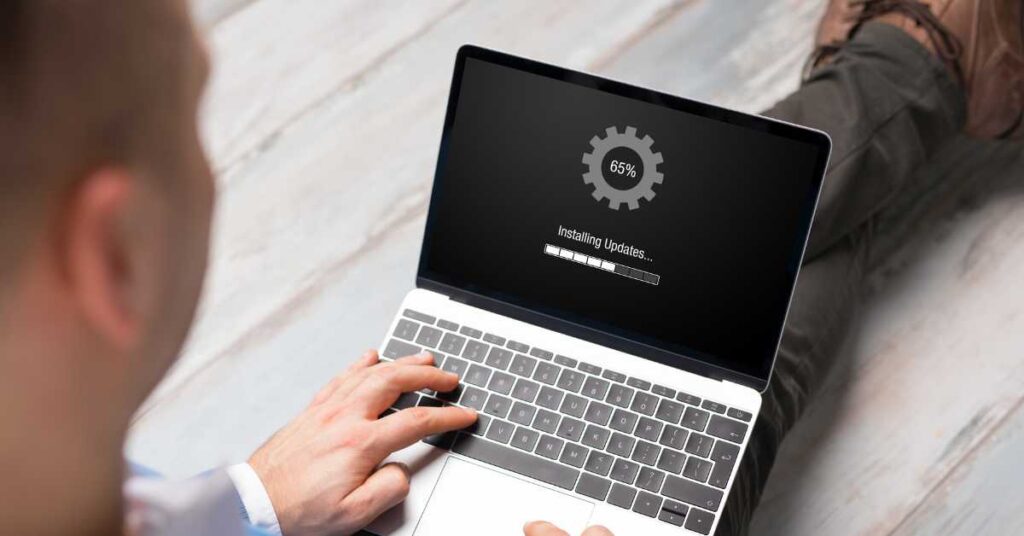Introduction
In today’s digital age, remote work has become increasingly prevalent, offering numerous benefits such as increased flexibility and productivity. However, with the rise of remote work comes the need for robust security measures to protect sensitive data and ensure the integrity of business operations.
This article will provide essential guidance on secure remote work practices and policies for your business.
The Rise of Remote Work
Benefits of Remote Work
Remote work offers several advantages, including improved work-life balance, reduced commuting time and costs, and access to a wider talent pool. It allows employees to work from anywhere, enhancing their productivity and job satisfaction.
Security Challenges of Remote Work
While remote work brings many benefits, it also introduces security challenges. Employees working outside the traditional office environment may use personal devices, access public Wi-Fi networks, or face increased risks of phishing and malware attacks. It is crucial to address these challenges to maintain a secure remote work environment.
Establishing a Secure Remote Work Environment
Secure Device Usage and Configuration
Employees should use company-provided devices or ensure their personal devices meet security requirements. Implement policies for device encryption, strong passwords, and regular software updates to mitigate security risks.
Implementing Virtual Private Networks (VPNs)
VPNs create encrypted tunnels between remote devices and the corporate network, ensuring secure data transmission. Implementing VPNs adds an extra layer of protection when employees connect to the company’s resources remotely.
Multi-Factor Authentication (MFA)
Enforce the use of multi-factor authentication for remote access. MFA requires employees to provide additional verification, such as a code sent to their mobile device, in addition to their password. This adds an extra layer of security to prevent unauthorized access.
Securing Remote Communication and Collaboration
Secure Video Conferencing
Select reputable video conferencing platforms that prioritize security and privacy. Use features such as password protection, waiting rooms, and end-to-end encryption to ensure secure remote meetings.
Encrypted Messaging and File Sharing
Implement encrypted messaging and file-sharing tools to protect sensitive information during remote collaboration. Ensure that data is encrypted both in transit and at rest to prevent unauthorized access.
Secure Collaboration Tools
Choose collaboration tools with strong security features, such as user access controls, encryption, and activity monitoring. Train employees on proper usage and encourage secure collaboration practices.
Data Security and Privacy
Data Encryption and Storage
Encrypt sensitive data both in transit and at rest. Utilize encryption technologies to safeguard data when it is stored or transmitted, reducing the risk of data breaches.
Password Management and Access Control
Enforce strong password policies and provide employees with password management tools to ensure secure access to systems and resources. Implement access controls based on the principle of least privilege to restrict unauthorized access.
Data Backup and Recovery
Regularly back up critical data to secure locations and test the restoration process. This safeguards against data loss due to accidental deletion, hardware failure, or security incidents.
Employee Training and Awareness
Security Awareness Training
Provide comprehensive security awareness training to employees, covering topics such as identifying phishing emails, practicing good password hygiene, and recognizing social engineering tactics. Promote a security-conscious culture.
Phishing and Social Engineering Awareness
Educate employees about the dangers of phishing attacks and social engineering scams. Train them to recognize common indicators of phishing emails or suspicious requests and report them promptly.
Reporting Security Incidents
Establish clear channels for reporting security incidents and encourage employees to report any suspicious activities or potential breaches. Prompt reporting allows for swift incident response and mitigates potential damage.
Network and Endpoint Security
Firewall and Intrusion Prevention Systems
Deploy firewalls and intrusion prevention systems to monitor and control incoming and outgoing network traffic. Regularly update firewall rules and configure them to restrict unauthorized access.
Endpoint Protection and Antivirus Software
Install robust endpoint protection software and keep it up to date. This helps detect and prevent malware infections, protecting remote devices from various security threats.
Regular Security Updates and Patching
Ensure all software and systems are updated with the latest security patches. Regularly review and apply updates to address vulnerabilities and protect against emerging threats.
Remote Work Policy and Guidelines
Establishing Clear Security Policies
Develop comprehensive remote work policies that outline security requirements, acceptable use of technology, and expectations for remote employees. Clearly communicate these policies to all employees and ensure they understand their responsibilities.
Bring Your Own Device (BYOD) Policy
If allowing BYOD, establish a clear policy that defines the security requirements for personal devices used for work purposes. Include guidelines for device configuration, security software installation, and data protection.
Remote Work Communication Guidelines
Provide guidelines for secure communication channels and best practices for remote collaboration. Encourage the use of encrypted email, secure messaging apps, and virtual private networks to protect sensitive information.
Monitoring and Incident Response
Network Monitoring and Log Analysis
Implement a robust network monitoring system to detect any anomalies or suspicious activities. Regularly analyze logs and monitor network traffic to identify potential security incidents and respond promptly.
Incident Response Plan
Develop an incident response plan that outlines the steps to be taken in the event of a security incident. This includes incident reporting, containment, investigation, recovery, and communication procedures.
Regular Security Audits and Assessments
Conduct regular security audits and assessments to identify vulnerabilities and areas for improvement. Engage third-party security professionals to perform penetration testing and vulnerability assessments.
Conclusion
Establishing secure remote work practices and policies is crucial for protecting your business and sensitive data. By implementing measures such as secure device usage, encryption, employee training, and robust monitoring, you can create a secure remote work environment that minimizes the risk of cyber threats.
Remember, cybersecurity is an ongoing process. Stay updated with the latest security practices, technologies, and threats to continuously enhance your remote work security posture.
Frequently Asked Questions (FAQs)
What are the benefits of implementing multi-factor authentication (MFA) for remote access?
A1: Implementing multi-factor authentication (MFA) adds an extra layer of security to remote access by requiring users to provide multiple forms of verification, such as a password and a unique code sent to their mobile device. This helps prevent unauthorized access even if passwords are compromised. MFA significantly enhances the security of remote work environments and protects sensitive data.
How can I ensure secure collaboration and file sharing during remote work?
A2: To ensure secure collaboration and file sharing during remote work, consider using encrypted messaging and file-sharing tools. These tools encrypt data both in transit and at rest, making it unreadable to unauthorized individuals. Additionally, encourage employees to follow best practices such as password-protecting shared files, using secure collaboration platforms, and avoiding sharing sensitive information through unsecured channels.
What should be included in a remote work policy for security purposes?
A3: A remote work policy for security purposes should cover various aspects, including device usage and configuration, acceptable use of technology, security requirements for personal devices (if applicable), guidelines for secure communication channels, data protection measures, password management, and reporting security incidents. It should clearly define employees’ responsibilities and expectations regarding security practices while working remotely.
How can I effectively train employees on remote work security practices?
A4: To effectively train employees on remote work security practices, consider conducting regular security awareness training sessions. These sessions can cover topics such as identifying phishing emails, practicing good password hygiene, recognizing social engineering tactics, and reporting security incidents. Use engaging and interactive methods such as simulations, quizzes, and real-life examples to make the training engaging and memorable.
What are the essential components of an incident response plan for remote work security incidents?
A5: An incident response plan for remote work security incidents should include clear steps for incident reporting, containment, investigation, recovery, and communication. It should outline the roles and responsibilities of key individuals involved in the incident response process. Additionally, it should address remote-specific incident scenarios, such as compromised remote devices, unauthorized access attempts, or data breaches during remote work. Regularly test and update the incident response plan to ensure its effectiveness.







